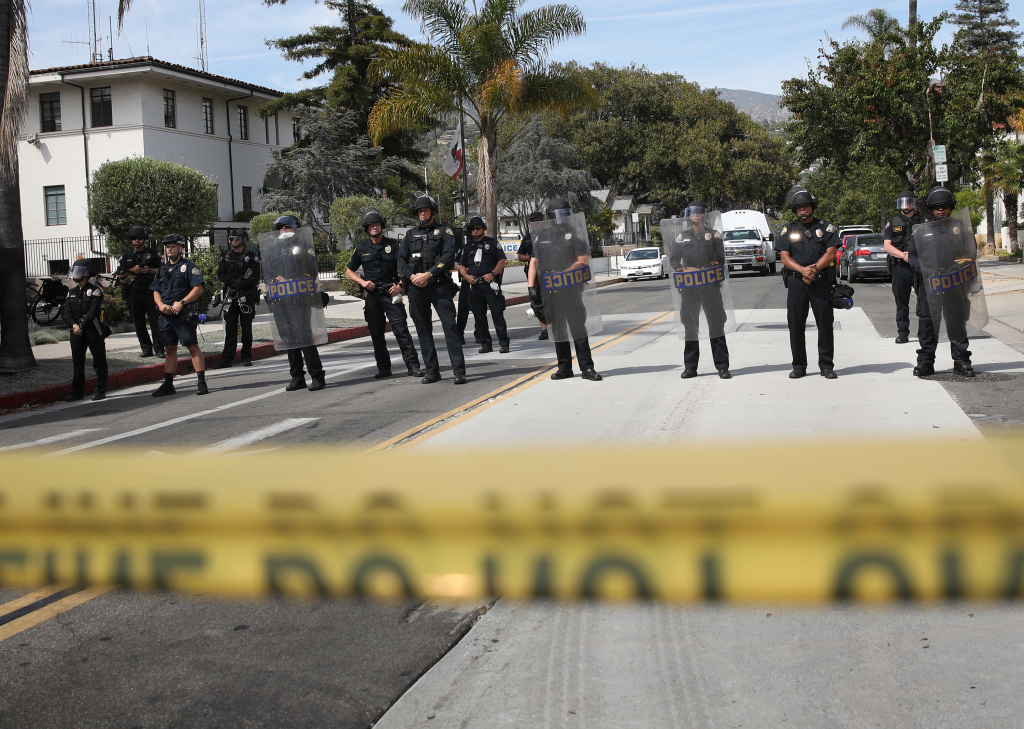Citizens Chosen to Shape Santa Barbara Police Review Commission
A Highly Qualified and Widely Diverse Group Applied for the 15 Positions

When Gabriel Escobedo drives, he makes a point to keep his registration and proof of insurance in plain sight on his car’s center console. It’s a matter of self-preservation, he explained. “I do not want to have to reach into the glove box when a police officer pulls me over.” Escobedo has a master’s degree and sits on the City of Santa Barbara’s Planning Commission. But when people talk about public safety, Escobedo worries most about the police. His father, a drug addict who suffered from mental illness, was always in and out of prison. His father’s life, Escobedo said, exemplified “the insidious manner in which our incarceration system punishes the incarcerated far beyond time served and made sure he would be back.”
This Tuesday, Escobedo was one of 15 individuals appointed to the city’s first ever Community Formation Commission. That’s a clunky term for the body that will eventually — in about a year — make recommendations to the City Council as to what model of civilian review commission it should adopt to provide additional oversight and accountability for the city’s Police Department.
Tuesday’s action was historic for a host of reasons. More than 75 people initially submitted applications and 48 finally appeared before the council — virtually — to make their pitch. It was an unusually high number of applicants for any city commission. Also, the pool of applicants was by far the most diverse — in terms of ethnicity, sexual orientation, gender, and life experience — ever to apply for any position at City Hall. And their charge — to advise the council on civilian police review models — is unprecedented. Thirteen will be voting members, and two will serve as alternates.
The push for a police review commission is not new to Santa Barbara, but in years past it was dead on arrival, thanks in large measure to the significant political clout wielded by the city’s peace officers’ union. In recent years, the union has grown less politically engaged.
Get the top stories in your inbox by signing up for our daily newsletter, Indy Today.
Sparking renewed passion for the idea was the killing of George Floyd at the hands of Minneapolis police officers and the mass protests that engendered. Santa Barbara’s chapter of Black Lives Matter — now Healing Justice — packed the council chambers. High on its list of demands was the creation of a police review commission. The council — made up exclusively of liberal Democrats — readily acceded.
Of the 15 applicants selected by the council, Healing Justice backed 10. One was Jordan Killebrew — who identified himself in his written application as “Black & Queer” and boasts an exceptional résumé of civic engagement. He’s served on the board of Endowment for Youth and on the civilian advisory committee convened by outgoing Police Chief Lori Luhnow; he trained cops to deal with their implicit bias and participates in the department’s Voices program, designed to acquaint new police recruits with members of the city’s underserved communities. And he has a leading role with Healing Justice.
Many of the applicants made clear they believe a civilian review board will bring the oversight and accountability that this police department needs to achieve more trust with the city’s minority community.
Councilmembers remarked favorably that in the past year, Santa Barbara officers deployed force in just 0.34 percent of the 49,000 engagements they had with the public, and only one injury resulted. Chief Luhnow initiated a host of community policing programs. Other programs — such as body cameras and annual reports detailing the ethnicity of people stopped — are in the works.
Even so, many councilmembers also noted, local law enforcement is not without its biases. Young black men, for example, make up 7.8 percent of all felony arrests throughout Santa Barbara County but less than 2 percent of the population. Hispanic young men account for 61 percent of felony arrests but only 50 percent of the younger population.
The last commissioner to be selected, Louis Reynaud, is a recent arrival to Santa Barbara. A Black man who served for six years in the 1980s as an Oakland police officer, he was the only applicant with a direct law enforcement background. “There isn’t anything I haven’t experienced as a Black man,” he told the council. In fact, he stated, the first day he arrived in town, he was pulled over and stopped by law enforcement officers.
The full list of commission members is as follows: Christian Alonso, Ana Alicia Zepeda, Gabriel Escobedo, Kim Johnson, Rachel Johnson, Elizabeth Rodriguez, Jacob Lesner-Buxton, Jordan Killibrew, Serafina Chavez, Demo Adamolekun, Mary O’Gorman, Richard Sander, Leandra Harris, Louisa Wood.
Every day, the staff of the Santa Barbara Independent works hard to sort out truth from rumor and keep you informed of what’s happening across the entire Santa Barbara community. Now there’s a way to directly enable these efforts. Support the Independent by making a direct contribution or with a subscription to Indy+.



